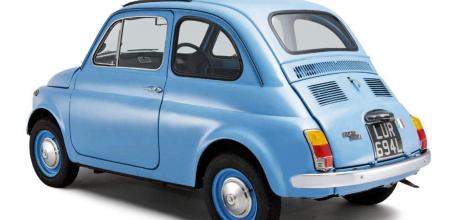Covid-19 has taught us a lot about the classic car movement
Covid has taught us a lot about the classic car movement, and despite the upheavals we’ve all endured, there’s plenty to be optimistic about.
Looking back over a year that could easily have threatened our hobby, we can be relieved that it has done more than merely survive; what we’ve seen is something more seismic. In 2020/21 there were plenty of signs that the financial, economic and social foundations upon which our industry rests are more robust than we ever believed. And ‘industry’ is now definitely the right word. Surveys tell us that the economic activity generated by classic cars in the UK totals in the region of £8bn-£9bn with direct and indirect employment of 30k-50k people.
And here’s the thing – our industry actually expanded during the pandemic. There are now 1.5million historic cars registered with the DVLA (up 50 per cent since 2016) and 200k more owners have joined the movement, a rise of 40 per cent. We can also see this in the form of greater coverage in more mainstream media.
Classic car auctions embraced new online buying formats with such gusto and professionalism that everybody now agrees that they won’t be disappearing anytime soon. The effect of buying classics remotely actually firmed up prices and brought new buyers into the fold who previously found the old car market too intimidating. In 2020, £155.68m was spent at UK old car auctions – up £22m on 2019 – and sale rates improved by five per cent. One auction house, Silverstone, grossed £33m in 2020.
And, remarkably when a pall of gloom was supposed to be shrouding the country, visiting auction house Gooding & Co from California sold 93 per cent of its entries for an astonishing £34m at its Hampton Court Palace sale. Set against the tribulations of Covid, such numbers and enthusiasm seem truly gravity defying.
And in 2020 and 2021 values neither fell nor climbed significantly. Prices have broadly stayed steady, with slight rises on modern metal and expected dips on Fifties cars. No violent, stock-market-like gyrations – just a gentle value curve that’s behaved with reassuring poise and predictability. Given all the uncertainty, anxiety, fear and economic contraction in other sectors, nobody would have been surprised to see the classic car market go into a terminal nose dive. In such historic, testing times, dalliances like buying an old Austin-Healey might not be expected to feature very high up on people’s list of priorities – but they do. Very much so. In that respect, we’ve underestimated the allure of classic cars as a special antidote to dark times. In fact, the nation’s affection for old motors has become so entrenched that 21 million (around 30 per cent of the population) see them as an important part of this country’s heritage. That’s a reassuring indicator against anything else the future might chuck at us.
Perhaps the most amazing thing is that all this enthusiasm took place without any classic car events happening at all. The tremendous energy has been self-propelled, and created almost entirely by the determination of enthusiasts. We should remember 2020 and 2021 as the years when our industry came of age, contributed strongly to GDP and expanded when other sectors contracted. So yes, it’s time to celebrate. Our silly old cars are making millions of people happy.


